Celia Lake's Blog
October 21, 2025
Looking forward (coming attractions)
Time for a quick ‘here’s where we are’ check. I’ll be doing a more detailed version at the end of the calendar year, as usual, but I thought you might like a quick peek at two things on my personal writing horizon: the next 1920s series and my progress towards a series in the 1480s and the time of the Pact.
Before we get there, Apt to be Suspicious (Edmund Carillon’s romance in the 1947-1948 year at Oxford) will be out on November 7th. It features cryptic crosswords, punting on the river, a particular mystery, and cryptography, among other joys. All the pre-order links and more details there!
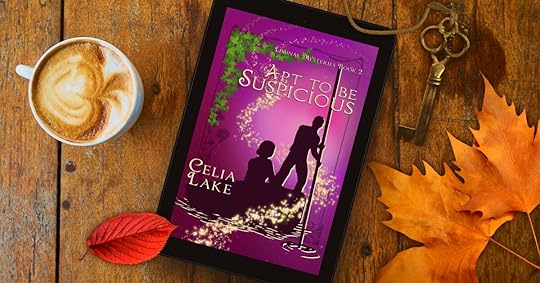
And I’m keeping the details close, but there will also be a novella-length Solstice extra coming on December 20th! (You might want some baked goods handy for this one.) Folks on the newsletter or Patreon will hear about it first, though it’ll also get a page here with all my other extras.
On to the other plans!
Mysterious SocietiesDistilling Sunlight, the last book in the current 1920s Mysterious Arts series is on track for editing starting in November! That means figuring out what I’m doing with the next 1920s series in a little more detail than scattered notes in my files. (There are a lot of those. Ideas for books is never the hard part for me.)
I’ve now got a rough order for the series, and here’s what I can tell you now! The books will be taking place between 1919 and 1929, with the dates running in sequence within the series.
1 : Each of the seven books will be focusing on one of Albion’s secret societies in more detail. We’ve seen several of them so far (particularly the Dwellers at the Forge and the Society of the White Horse) but I’m excited to spend more time with all of them.
2 : We’re going to be spending a lot of time in and around the main Trellech Library. This is going to include at least one romance with a librarian, and – well. A lot of you, my lovely readers, are also librarians, so a certain amount of library geekery. (One of my current projects is reading a lot of library history and figuring out how they arrange their stacks and how that’s changed over time.)
3 : Most of the romances we’re getting are with new characters – but some favourites will definitely be making an appearance. (This includes Jehan Knox.) One of the romances is something Gabe and Rathna refer to briefly at the end of Upon A Summer’s Day, and so on…
More on the writing stack in the end of year posts, but I expect to start writing the first of the Mysterious Societies books in May 2026, with it coming out in February of 2027. This feels ridiculously far in the future, but planning is what it is. From there, I’ll be alternating with other time periods. (There are several other books in the pipeline before that!)
Progress toward the PactSpeaking of other time periods… I’m making steady progress on the background research toward the Pact. In November I’ll be reading about Henry V. I plan to spend December reading several fiction (and fantasy) books set in the 1480s for a bit of fun and a sense of the existing landscape. You can find my existing research reading posts over on Patreon (they’re all free to read), and there will be one about Edward II, Edward III, and Richard II at the end of the month.
And then I’m going to be diving into the more detailed research so I can plot out a series set in the 1480s. My hope is to have most of that work done by early 2027, so I can start writing something in the middle of the year.
I currently have 119 things on my reading list for the period, so there’s a Fox House like ambition here. Also Owl House, wanting to know all the things. I’m looking forward to it!
I am not actually planning to read all 119 of those things, but I will be spending my vacation from my day job in December figuring out which ones are getting priority, and also setting up a lot of map, timeline, and family tree files so I can drop details into the right places easily as I start the reading.
If you look through my existing research posts, I’m reading 3-4 full length books most months (sometimes 5) for the research parts of this project, so that’s about the sort of pace I want to keep as we head into the Wars of the Roses. Parts of the process are different, though, since part of what I need to do is keep track of dates and locations of people in a lot more detail for my later planning and outlining.
My actual plan is to read things in chronological order of publication. I’m interested in this for three reasons.
1 : It will let me see how various lines of thought and new history and discoveries play out. (And means that the most recent thing I’ve read has the newest additional research in play, which will be handy as I get to those bits).
2 : It means I’m not reading a stack of books about exactly the same angle on a topic all at once. (Otherwise I was looking at about 6 books about the Princes in the Tower in a row.)
3 : When new books come out (a reader let me know about an upcoming book about Margaret Beaufort that’s coming out in March!) I can just tack them onto the end of the list.
I might start with an overview or two, however, just so I can get the general sense of key events firmly embedded in my brain. And I need to figure out how to sequence podcast episodes, where the chronological factor is not generally as useful.
Anyway, more to come about all these plans!
The post Looking forward (coming attractions) appeared first on Celia Lake.
September 18, 2025
Claiming the tower and my birthday sale
Claiming the Tower is here! Hereswith and Bess didn’t set out to change the world, but by the end of the book, they’re on their way to doing that.
It’s a f/f (sapphic) romance set in 1854, at the beginning of Hereswith’s time on Albion’s Council. If you’ve read the Mysterious Fields trilogy, you’ve seen her (and a tiny bit of Bess and Hereswith’s later husband, Galahad) later in their lives.
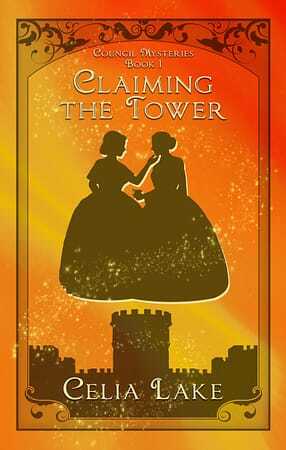 Birthday sale!
Birthday sale!And then I’m turning 50! I’m having a sale for 50% off a wide range of bundles on my direct store, plus the audio of Pastiche and pre-orders for Apt to be Suspicious, Edmund Carillon’s romance at Oxford during the 1947-1948 year. Learn more about all the details at the link, including two new starter bundles of three books each, ideal for introducing a friend to my books.
The post Claiming the tower and my birthday sale appeared first on Celia Lake.
August 19, 2025
Looking for books on sale?
I don’t know about you, but my book budget is never as big as the list of books I’d like to buy. Here are five ways to learn about books on sale and library access.
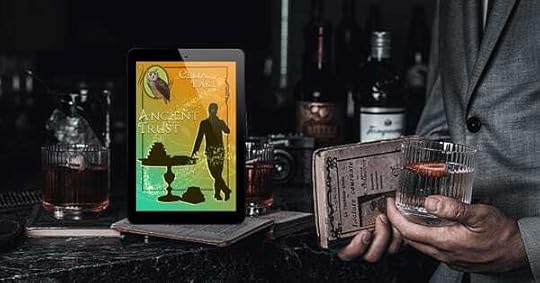 Newsletter & social media
Newsletter & social mediaIf you’re interested in a particular author, check is their own spaces – their website, newsletter, and social media.
Many authors will have a page that lets you know about free books. Quite a few also have info about sales and upcoming promotions. Some may have bundles, discount codes, or other options available via their website.
Authors (and publishers) will put books on sale for all sorts of reasons, like to encourage people to check out the first book in a series. Sales can run for a day (24 hours), a few days, or longer – it depends on the sale and who’s setting it up!
Sales on my booksI’m currently rotating sales on all my books that have been out for a bit, so people can get something to read for a little less money. I usually put my books on sale for a longer period (a week or so for one-day sales promotions, longer for books in the sales rotation.) I think that helps give people a little more of a chance to get the books.
You can check out my current and upcoming sales here on the website. My newsletter is the best place to get the timely announcements of sales and promotions. There’ll usually be a note on my social media. I also have pages for free books and for bundles and books available at a discount via my direct store.
But that’s not your only option! There are three tools I use regularly to keep an eye out for books on sale or that I can get via my library systems.
eReaderIQeReaderIQ is a free (donation-supported) browser extension that helps you track sales prices for ebooks based on conditions you set. For example, “this book is on sale for $1.99” or “the price has dropped by $5.00”. You can also track sales for all books by a given author or check out their lists of price drops by genre and other aspects.
You just need to set up a free account for the tracking and install the extension. Once you’ve tracked a book, you’ll get an email when the price drops to the criteria you set.
The extension only works on Amazon’s sites. But you still might want to check it out if you get your ebooks elsewhere. Many times, when a book is on sale on Amazon, it’s also on sale in the other distributors.
If you’ve read the author notes of my books, you know I go through a lot of background research reading. I find eReaderIQ particularly helpful for tracking books on sale that I don’t need yet but know I’m going to need in a few months. I’m also using it to fill out ebook collections for authors I read in print but don’t own in ebook yet (Elizabeth Peters for me, for example).
The website also lets you sort books into different lists, so I can also use it as a place to keep the titles I want to get sometime. If I can get them on sale, great, but if not, the list is right there. I can look at getting the books I need without worrying about forgetting some.
Library ExtensionWant to get your books from your library? That’s what the Library Extension is for! This one (also free) will check the library systems you’ve set up. You can even check if a book is available through Libby, Hoopla, and other options you have access to.
This one works on a huge range of book sites. That’s everywhere from specific distributors like Kindle and Kobo and Smashwords to sites like GoodReads and Storygraph. And it works for audiobooks, ebooks, print, and a range of other formats. (Or you can turn off formats you don’t use in the settings.)
Once you install the extension, you set up the specific libraries you want to access. They include more than 3,000 libraries across Australia, Canada, Germany, New Zealand, the United Kingdom and the United States. When you’ve got your library systems set up, it’ll even tell you how long the wait is for a specific book in each system. There are options to find books via other tools, too.
BookBub, sales lists, and promotionsAnother source of books on sale is BookBub and other sales and promotion lists.
Authors (and publishers, for trad published books) submit their books to be featured on these lists. In the case of BookBub, there’s a selection process. On other lists, author’s pick a date and their pricing and schedule it.
What’s great about these – though also dangerous for the book budget in other ways! – is that you get an email with books in the genres you selected or the genres that list covers that are on sale that day. That can make it easy to check out a new author or book without spending a ton of money.
Sales ListsHow do you find lists? This is going to depend a bit on your preferences for reading, so try a search on genre and subgenre terms and see what you find. If one list doesn’t work for you, consider checking out others.
Because BookBub has selection criteria and balances their scheduling, I usually find the most ther./ But if you’re looking for specific romance subgenres, their categories aren’t as nuanced as some of the romance-specific lists.
PromotionsYou may also have seen promotions in an author’s newsletter that include a bunch of books on sale that share a genre, theme, or other grouping. These can be a really fun way to explore! Usually authors in the promotion commit to sharing it with their newsletters and/or social media, so that’s the way to find out about it.
Another form of promotion out there are the “stuff your ereader” days, where many authors get together and share a free or deeply discounted book. Usually these involve going to a webpage that lists all the books with some helpful categories or tags to let you filter. I do these periodically, and they’ll be listed on my sales page.
Sometimes the date for these is not shared with readers until the day of, so being on an author’s newsletter or following their social media is the best way to find out about that day’s sale.
Smart Bitches, Trashy BooksSmart Bitches, Trashy Books has been around for more than two decades now! Besides being a fantastic source of news and reviews of romance books (across a wide range of romance genres).
They also run a regular (every couple of days) highlight of current sales for romance books. They link to the review on the site, which is a great reminder of why the book was interesting!
The post Looking for books on sale? appeared first on Celia Lake.
July 15, 2025
It’s Disability Pride month!
You might have noticed that I have quite a few books where characters are living with chronic health issues, physical disabilities, magical disabilities, or ongoing mental health concerns (including war-related trauma as a relevant subcategory).
Those links go to pages with all the relevant books. You can find more details in the book’s blurb and specifics (if they might be spoilers) in the content notes section. Click, tap, or select that to get the details! You can also get all the content notes on one page if that’s easier for you.
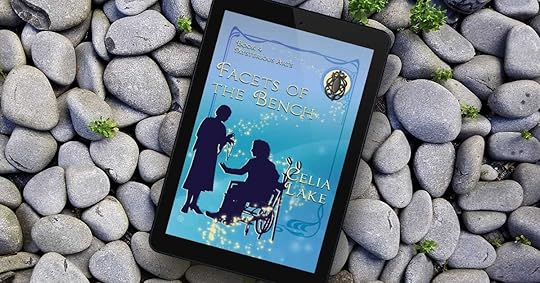 Representation matters
Representation mattersOne of the things I knew I wanted to do in my writing was to write stories about people like me and my friends having adventures, falling in love, and making the world a bit better. And by ‘people like me’ here, I mean including people who are disabled, who live with chronic health issues, and who are neurodiverse. Among other things.
Not all my characters are these things. I do have plenty characters who are neurotypical, ablebodied, radiantly healthy by whatever standard we’re using.
I do also write characters and situations involving disabilities we don’t have in our world. Those are disabilities caused by or related to magic and magical vitality, as well as some socially stigmatised abilities.
This year, I was so excited to write Facets of the Bench, featuring Griffin (seen in two previous books). Griffin’s an ambulatory wheelchair user, living with a magically-triggered autoimmune disorder. There aren’t nearly enough books focusing on people who sometimes walk and sometimes wheel.
How do we define disability anyway?You might be familiar with the idea of a medical model of disability versus a social model of disability. One of the things I spend a lot of time thinking about are some of these differences (and the question of ‘is this thing actually a disability’?)
The medical model of disability is, roughly speaking, the idea that the disability means something is broken or doesn’t work right. The social model argues (sometimes very compellingly) that something is only a disability because society hasn’t decided to be accessible for that thing.
For example, for someone who is Deaf, being unable to hear is a disability in mainstream society. That’s because most people don’t know sign language. In communities where everyone signs (the same sign language, anyway), it’s not actually a disability not to be able to hear.
Another example is that neurodiversity isn’t necessarily a disability – or a thing people want to fix. Society can make it hard for people with specific needs due to neurodiversity to function comfortably or access things in a way that works for them. But those people might be fine with the way their brain works if they can avoid those situations, and prefer their brain like it is.
The reality is that the lines aren’t as clear cut as summaries want to make it. Some disabilities are things where people really would prefer not to deal with it. Ask many of my friends with chronic pain, for example! But also, better social supports for those disabilities would be great in the meantime, if a fix isn’t possible.
Experiences of disability change over timeAnother thing I think about a lot is how the experience of disability changes over time. Sometimes that’s because tools or resources or understanding of a specific aspect changes. But sometimes that’s because the person comes to a different stage of understanding disability. (I know it’s happened to me with mine!)
I wrote about how experience of disability changes in August of 2024 in a public post on my Patreon. There’s also a post that month about disability history.
My own experiences of disabilityAs someone who is disabled, I write both about experiences I’ve had and some I haven’t. My stuff mostly has to do with chronic health issues that affect stamina, energy, focus, and ability to get things done. (One reason I write so much is that it does not involve leaving the house, which is extra draining for me compared to most people most of the time.)
I also work in an area of the intersection of disability and education, focused on disabilities I don’t have. I’ve been in my job for ten years this year, and I’ve had a lot of chances to hear and read about a wide diversity of experience, both today and historically. Some weeks, I do a lot of debunking people’s wrong assumptions about those disabilities or the people who live with them.
I’m deeply and painfully familiar with the third-shift work of managing multiple conditions, wrangling scheduling for appointments with different specialists, and advocating for what will let me work best. Some times in my life that’s worked pretty well (right now is pretty good). But I’ve also had stretches, months or years at a time when it’s been miserable and overwhelming.
When I write about disability, I have all those memories in my head. I may not know what it’s like to be a lower limb amputee in the late 1800s. But I can and do write from the experience of navigating the world in a body that’s struggling. About dealing with other people’s opinions about my health or competence (honestly, this is the most annoying one a lot of the time). About whether accepting help is a thing I can do – and whether what’s being offered is actually helpful.
The rest, well, that’s where research and listening and learning from other people with specific disabilities comes in. And that’s how we have stories about more people, with as accurate a representation of their experiences as possible.
The post It’s Disability Pride month! appeared first on Celia Lake.
June 17, 2025
Idea to Book: Grown Wise
Time to explore the ideas behind Grown Wise! There are quite a few (well, the whole Mysterious Fields trilogy, plus aspects of Eclipse and The Magic of Four….)
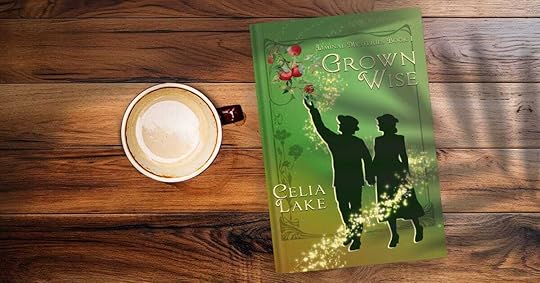 The Mysterious Fields trilogy
The Mysterious Fields trilogyThe Mysterious Fields trilogy is a big part of why Grown Wise exists. Or rather, I was thinking about Grown Wise when I started writing the trilogy. You can think of Grown Wise as the other bookend, along a whole stretch of complex family history. (More about the ideas behind the trilogy over here.)
Perspectives and Grown WiseIn the trilogy, we see three generations Fortier family (Chrodechildis, her sons Clovis and Dagobert, and their children). But we see them, through the trilogy, from the outside. None of them are point of view characters. [1] Ursula, of course, is one more generation further down the tree. She’s the daughter of Dagobert and Laudine’s younger son, Isembard.
Thessaly and Vitus, the main characters of the trilogy, discover a lot over the course of three books. But they don’t have access to all the information. Some details are hedged around by oaths. Some are things no one in the family talks about. And the Fortiers are a family hedged round by thorns and worries.
GarinGarin Fortier – Ursula’s uncle – is a particularly interesting member of the family. I did not expect him to have this kind of arc when I started writing him as a skilled and competent but deeply difficult person to be around. Over time – and quite a few books – there’s a lot about him that’s far more complex than that first glance suggests.
The trilogy gives perspective for Garin. He was a serious (and fairly mature) sort of person at 9. But the events and aftermath of the trilogy and what it means for his parents and for him obviously are a major pivot point in his life. Only it’s a pivot that no one talks about directly. (For all sorts of reasons, many of them actually quite reasonable.)
Garin grows up knowing the expectations on him, and throwing himself into fulfilling those expectations. We’ll come back to this in a couple of weeks with a fuller look at his arc as a blog post. They include two Challenges for the Council (and decades of dedicated service there) and a marriage. And in his later years, turning away from the Council to do something different (and much needed).
ArundelOne of the things I loved showing in Grown Wise was the care that Garin takes with Arundel. He does not have an intuitive sense for the land and land magic, the same way some of my other characters do. (Geoffrey Carillon, Gabe Edgarton, and to a fair extent, Garin’s brother and nephew, Isembard and Leo.) But he is diligent about tending the land, about listening to people with expertise about what is needed, and what is supporting that.
(In the very first chapter of Grown Wise, he and Ursula have independently come to the same decision about what would be helpful. Helpful both politically and in pragmatic financial terms, for their tenants and for their land.)
The care that Garin takes with the estate is visible in dozens of small ways. Oh, some of it’s certainly tuned to his own preferences. There are those three poison gardens, a common anchor of both alchemical work and protective work. But he hires capable people, treats them well, and makes sure the resources to do what’s needed are available. Even when that’s outside his own skills.
Rebuilding after the warGrown Wise is the first of a four book series exploring what life and love look like after the Second World War. I’ve said previously I don’t intend to write past 1950 for a number of reasons [2]. But I’m loving getting a chance to explore the late 1940s and what that means.
Some of this is directly in the book. We have what it was like to go to war and come back, in Jim’s experience. And also, with Jim, what it was like not to be part of the big talked about military events, but to be trailing slightly behind. (And yet, that has its costs and damages and sorrows.) We have ongoing legal and societal changes. These include ongoing rationing, but also things like the Agriculture Act that are designed to rewrite a fair bit of the underlying landscape in particular ways.
There are other more subtle changes. Part of the plot of Grown Wise takes on the question of how much support people at home had to share, and what it looks like when the community doesn’t get that. (Even for some excellent reasons, like everyone working flat out to do more immediately essential tasks.)
And finally, in Albion’s case, there are a number of changes to the Council. People who’d held their seats through the war are beginning to consider retirement. That changes the nature of the group, it means a new Council Head, and all sorts of implications following from that.
A terrifying delightI keep describing Ursula as a terrifying delight for a reason. One of the things that fascinates me about writing generationally (as I’ve done or am doing for the Fortiers, Carillons, and Edgartons at this point) is the way different personalities emerge from the same parents and approximately the same years of birth.
Ursula and Leo – her younger brother – are absolutely both the children of their parents in particular and visible ways. But they’re not the same. Ursula combines all her mother’s ability to see patterns, especially some of the more obscure ones. (Thesan points out at one point that astronomy is at least partly the art of figuring out what’s there by what you can’t see).
And she has her father’s charm and social skills, as well as understanding how to frame a situation as a duel. (Even though Ursula is not actually a particularly competent duellist. At least by her standards.) [3]
What that meansI’ve loved getting to explore the ways Ursula and Leo are different – and also the ways Ursula is attentive to her younger brother’s needs and preferences. She wanted – and pushed – to become her uncle’s Heir for all sorts of reasons. But one particular one was that if she does, no one will pressure Leo to do that.
The other delight here is seeing Ursula’s relationships with all her many uncles. (And the extras will have a bit more of a couple of those!) I particularly loved watching her move from a child-adult interaction with them into them very much considering her also an adult, with approaches worth listening to. Ursula has worked hard for that – as is visible from her narration, she thinks about it a lot.
I particularly love the way she is with Alexander, teasing him and pressing him just the right amount. From the other side, I love how he is with her – thinking about questions of protection and skill, but also laying out reading for mutual delight. Or at least excellent debate.
And a few secretsI’m not going to go into them here – I don’t want to spoil the book for anyone who hasn’t read it!
But I am delighted we got to look a bit more at one of Albion’s secret societies in a lot more detail. On this front, the next 1920s series I have planned will likely be called Mysterious Societies. We’ll spend more time with each of the societies in turn, along with a romance (and I also plan to spend more time in Trellech’s library, through the series.)
Footnotes[1] I am working on editing up the trilogy extras, and you do get to see some of the Fortier characters as point of view characters in there. Also Alexander. And yes, a bit more direct information about some key scenes.
[2] Since we’re already having footnotes! First, if I write too far into the 1950s, I have to face the fact that a number of characters – Gil and Magni in particular – are getting up there in age and are likely to die. And second, in the 1950s, I start being less interested in the landscape of the larger world outside of Albion, or how it interacts with Albion. (It’s also a different kind of research challenge, for reasons I’ve gone into partly in the public Patreon post about Apt To Be Suspicious, the next book in this post-war series.) https://www.patreon.com/posts/researc...
[3] Obviously, she’s basing her standards on her father, her uncle Alexander, and several of the other best duellists of their respective generations. Never mind her little brother, Leo, who’s shaping up to be quite good at it. Or Artemis and Theo Lefton, who are just plain terrifying together.
The post Idea to Book: Grown Wise appeared first on Celia Lake.
June 10, 2025
Ideas to book: Weaving Hope
Welcome to another round of idea to book! Today, we’re talking about Weaving Hope, set in 1927. There are three things I was lokoing forward to exploring in this book. (Well more than three.) They are having fun with tapestry weaving, someone taking over a large home they’re not familiar with (with some secrets!), and people building new lives after the Great War.
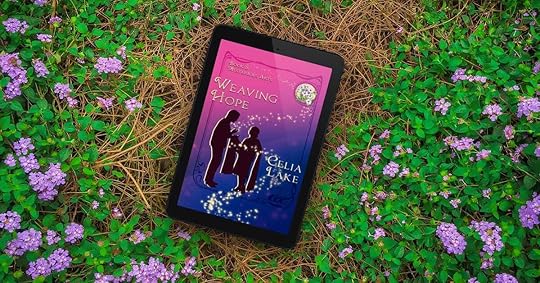 Tapestries
TapestriesI knew when I started thinking about the Mysterious Arts series and the different kinds of arts I wanted to include that weaving should be one of them. I am not a weaver, I knit, but the chance to play with that much colour is delightful. I did take a weaving class to get a sense for how things work, and what weaving feels like in the body, though!
In Weaving Hope, I also wanted to spend a little time with the woman who became Ferry’s apprentice mistress after the events of Outcrossing. Ferry has a modest amount of magic at her disposal in terms of power. But she has a delicate touch with it. That’s exactly the right combination for working restoring delicate threads in a tapestry.
Eda does weave cloth. But her particular love is tapestry work. That’s a whole different technique, and mending and restoring them is even more of a specialised process. I watched a lot of videos of tapestry restoration, along with reading a lot about how the massive tapestries were made.
(And of course, I thought a lot about what they depicted, but that gets into spoilers!)
One of the things I loved was thinking about how magic made some of this easier. Eda uses a variety of techniques to stabilise that large – heavy – tapestry while she’s working on repairs. There are charms to get a proper, proportioned sketch of the work and the damaged spots, so she can plan the needed tasks. And once the restoration is done, there are illusion charms to help keep it looking brilliant and unfaded, the way it was designed, even centuries after it was made.
A manorKiya had been saying for a while that I ought to do a large manor that had a plot, but was not creepy. (The house in Mistress of Birds definitely has some creepy!) I loved the idea of a home that someone had inherited unexpectedly. Jeremy didn’t grow up with that kind of house or those kinds of expectations.
And yet, here he is, he’s inherited a place and the people working in that place. He wants to do well by them, but he’s not at all sure what that involves. Every time he turns around, there are rules about doing things right he hasn’t quite learned yet. Like how to address the staff, or what their roles are. And then, of course, there are the actual mysteries of the house and the gardens.
It’s not that Jeremy doesn’t know anything. When he’s in the realm of what he’s done for work, he knows how to talk about what he’s doing. Which pieces matter. Which ones stray into a conflict of interest. He can figure out how you pay an expert to do things an expert does, or arrange a cart for a visit in a town he’s never been to.
I also loved getting to play with some of the larger social expectations. What other people think about Jeremy and his house, and what he should do now. Including Jeremy.
Building new lives after the WarA lot of this book is quietly about building new lives after the Great War. Eda’s done a lot of that, after her husband’s death in France. (Even if she comes to some new realisations about her marriage over the course of the book.)
And then there are the two young gardeners on the estate, so fleetingly visible they’re rather like rabbits darting off in the garden. They’ve made a good quiet life for themselves that works for them. And they’ve got Gerald Waters fiercely making sure they keep having that space and stability. (Also, he’s turning them into quite good gardeners in the process.)
Something a little quieterAs a bonus extra, I also wanted something quieter. This was the book I wrote after the Mysterious Fields trilogy. Those three books are rather more intense than many of mine (and the process of writing them was more intense). Taking a breather and enjoying the quiet here was delightful. The book has a slower pace. It lingers more in some of the sensory pleasures – flowers, scent, singing, the colours and textures of weaving.
That’s our look at the ideas behind Weaving Hope!
The post Ideas to book: Weaving Hope appeared first on Celia Lake.
June 5, 2025
Summer reading challenge
Are you doing a summer reading challenge? Trying to figure out which of my books fit certain categories? Here’s a guide for the summer of 2025
If you’re looing for books for a prompt that isn’t here, drop me a note and let me know, and I’m glad to add it. Some things, it’s much easier for me to rummage for the data than for readers to do so (things like character age, specific dates, etc.)
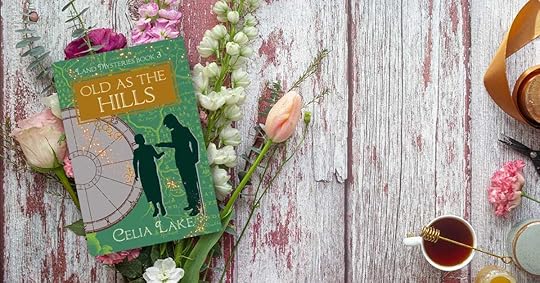 General resources
General resourcesIf you’re looking for books by an author who’s neurodiverse or disabled, hi! I live in New England (specifically Massachusetts).
A few prompts tend to come up a lot:
Books published in 2025: Weaving Hope and Grown Wise. Harmonic Pleasure will be out on August 8th. Older characters: Books where the main characters are over 40 . I also have a list on my wiki with ages of protagonists if you want to get more specific. Covers of a specific colour: The easiest thing to do is browse the complete list by era . My Books in Context page has links to lists of all sorts – sexuality and orientation, aspects of characters, tropes, occupations, and more. Past challenge promptsJune 2023: Summer (any time) reading fun December 2023: Up for a 2024 reading challenge?(I have not updated these for books that have come out since.)
2025 additionsFound familyAlexander, beginning in Best Foot Forward, continuing to Nocturnal Quarry, aspects of Upon A Summer’s Day, and his appearances in Grown Wise. (He’s a point of view character in everything but that last one.)
Facets of the Bench is all about Griffin realising who he’s found – and Annice finding a new community.
Fool’s Gold has Robin becoming part of a family that better appreciates his skills and talents.
About an artistFor actual painting, Complementary and Fool’s Gold. For other arts, check out Art and artisans and Crafters.
The post Summer reading challenge appeared first on Celia Lake.
June 3, 2025
Characters and songs
Time for something a little fun! Let’s take a look at four songs that make me think of specific characters or character moments. Three are for books and characters that are out in the world. One is for someone you’ve seen later in her life (if you’ve read the Mysterious Fields).
We’re going to take them in reverse chronological order, because that’s the more amusing one. I’ll be linking to YouTube for the songs, and Genius for the lyrics.
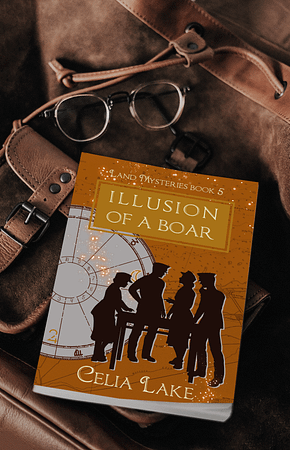 Writing and music
Writing and musicI should start here by noting two things about music and my writing.
First: When I’m actually writing, I have a whole series of playlists. They do not have words in any language I’m going to try and parse. Mostly, that means instrumental. But one of the playlists for Old As The Hills includes a bunch of Basque music. A few of them have songs in Scots, Welsh, or Irish Gaelic. (Latin depends on the Latin and ennunciation for me. French, Italian, and German are usually not an option.)
The exception to this rule is Best Foot Forward, which managed to fix a 20 year broken relationship with common practice period music. (More about that here in Best Ear Forward)
(Weirdly, I can compose music while listening to different music, including working with lyrics. But when I’m writing words, I need no words or only in a language that I won’t try and interweave with what I’m writing.)
Second: I am unlikely to have picked up music written since about 1920 unless it’s certain subgenres of British folk, Broadway, or movie scores. Or unless Kiya (friend, editor, other half my brain) has introduced me to it. Other people too (there’s one of those in here). But honestly, mostly Kiya. Or sometimes one of my Monday night role-playing groups, which includes Kiya.
1944 : Primo Victoria : Van CantoKiya waved this one at me when I was fairly early in writing Illusion of A Boar. I actually have two versions on my “Particularly resonant songs” playlist, this cover by Van Canto and the original by Sabaton. Both are metal, Van Canto is an a capella metal band.
Van Canto : Primo Victoria on YouTube and lyrics for Primo Victoria on Genius.
Why this song? Well, it’s about the Normandy invasion. Of the four point of view characters in Illusion of A Boar, Orion is the only one who has seen direct combat. He’s also the one who has the most complex feelings about not being part of the D-Day invasion.
However, he absolutely has all the feelings about running headfirst into the challenge, knowing that death might be the result (for him, for people he cares about). And he is also clear – though his fighting was mostly in the Greek islands – of how urgent and necessary fighting fascism and the Nazis are in that moment.
From the chorus:
1940 : Right Hand Man : HamiltonAiming for heaven though serving in hell
Primo Victoria – Van Canto
Victory is ours their forces will fall
Through the gates of hell
As we make our way to heaven
Through the Nazi lines
Primo victoria
Back in 1940, we have a song that kept catching my attention when I was writing Old As The Hills and Upon A Summer’s Day (a book whose structure is, incidently, based on the dance of that name). There’s a lot in Hamilton that is resonant about the impact of specific choices, good and bad.
Right Hand Man (Hamilton) on YouTube and the lyrics of Right Hand Man on Genius
There’s one line in this that gets me every time. I mean, besides the fact that if you put Alexander Hamilton and Gabe in the same room, the room would shortly probably not still be in one piece. Because they’d both be gesturing energetically and sproinging off after their own particular points of interest. Heavens help anything in the way.
One of the central questions of Old As The Hills (which gets Gabe into considering the question) is about sacrifice. Sacrificing your life for something is a thing you can only do once per lifetime, so how do you make it count? How do you know if it’s what’s needed now?
The rest of the song has a lot in it about the chaos and many difficult choices of resistance, of war, of groping through chaotic information and lack of information to make the best decisions you can. But then there’s this:
[WASHINGTON]
It’s alright, you want to fight, you’ve got a hunger
I was just like you when I was younger
Head full of fantasies of dyin’ like a martyr?
[HAMILTON]
Yes[WASHINGTON]
Right Hand Man – Hamilton
Dying is easy, young man. Living is harder
It’s that last line that kept me coming back. This is a complicated truth, even for Gabe, who is 40 at this point, and no longer quite as young or impetuous as he was earlier. All of this means he’s got to confront not just the question of what he’s willing to die for – but what living for something means.
1923 : Growing Sideways – Noah KahanThis one is thanks to a reader and friend who suggested it was very much Isembard in his darkest years, between 1917 and about 1923. (And also about him reflecting back on those years later.) By the time we see him in Eclipse, he’s at least found some internal balance, and that improves over time. And a certain amount of prodding from Thesan.
Growing Sideways by Noah Kahan on YouTube and the lyrics to Growing Sideways on Genius.
Isembard has so many little chips taken out of him, and some larger shattered holes. (Well, one in particular, about Perry.)
Here, the lines that get me are:
And I divvied up my anger into thirty separate parts
Growing Sideways – Noah Kahan
Keep the bad shit in my liver and the rest around my heart
I’m still angry at my parents for what their parents did to them
But it’s a start
As a note, there will be a sequence of Isembard in his first year of teaching at Schola – 1923-1924 – coming to Patreon later this year, which also touches on some of this.
The good news is that Isembard does, over time, figure a lot of this out. What’s worth staying alive for, how to feel alive, how to fill in those holes. He gets a surprise about some of the lingering cracks in Grown Wise, much later in his life, too.
1854 : Start Again – Grace PetrieIf you’ve read the Mysterious Fields trilogy, you’ve seen Hereswith Rowan as a secondary character. In 1889, she’s been the Head of the Council for 13 years or so, a woman in her seventies.
But the book I’m editing right now is her first romance, with Bess Marley, in 1854, Claiming the Tower. It also includes her Council challenge. (I have two more books planned in this sequence: Hereswith’s romance with her husband, Galahad, in the 1860s. And a not-a-romance novel including the Powell cousins – Metaia and Owain – once they’re both on the Council in the late 1870s.)
I’ve been thinking a lot about Hereswith’s motiviations for making a major change in her life. And then Kiya waved this song at me, and I’ve had it on repeat over and over.
Start Again by Grace Petrie on YouTube and the lyrics to Start Again on Genius
1854 is the beginning of the Crimean War. (October 1854 is the Charge of the Light Brigade, which is the part of the war that people might remember, along with Florence Nightingale.) It’s also in many ways the first modern war – including having reasonably prompt report of battles and conditions at the front. Long story short – there’s a novel here, obviously – Hereswith is infuriated by the many awful decisions being made by people in power.
There’s rage there. There’s wanting to tear down the world to make something better. There’s having to work through the existing forms of power, held by people who do not want to change anything.
It’s about picking up again – and again. It’s about seeing that there’s another Albion possible, that we can keep reaching for it.
And in the crowds of everyone
Start Again – Grace Petrie
I thought I saw the world to come
I saw another Albion
The post Characters and songs appeared first on Celia Lake.
May 27, 2025
Family patterns
One of the things I’ve loved about the arc that reaches from the Mysterious Fields trilogy to Grown Wise is getting to see family patterns shift and change. Right now, we’ve had a chance to see four generations of the Fortiers and how they act and react.
 The 1880s
The 1880sWe begin in the Mysterious Fields trilogy with Garin and Isembard’s uncle as Lord. Though their grandmother Chrodechildis still very much head of the family. Vauquelin, her husband, had been dead for five years.
That’s the first shift. A bit more of this will be visible when I get the trilogy extras out (I’m working on it! Sometime sooner than later.)
But Vauquelin was a ritualist by training and preference. His sons and daughter are not. Vauquelin is the one who made the original agreements with Henut Landry when she arrived in Albion. He is the one who maintained the oaths and agreements for the family and estate. When he dies, that begins to shift.
Clovis has a focus on Sympathetic magic along with duelling. Bradamante has married out, but has a strong background in Flora and growing plants. Dagobert is an alchemist. Childeric has a focus on Incantation as a field, and Sigbert on duelling and materia.
It’s possible, reading the trilogy, to see how that got the family into a fair bit of trouble. It’s not that ritual is the answer to all magical problems. But the attitude a ritualist brings is different than the ones other skills bring. They begin digging a hole that’s going to be nearly impossible to climb out of.
And then there’s another problem – a particular teaching technique at Schola in the 1880s that did not do Childeric any favours. (Childeric is not the only one affected here.)
1890s through 1913We then come to an era where Dagobert is Lord, and he and Laudine are bringing up their sons. There are challenges – Dagobert’s health limits some of what he’d like to do. They keep a lot of their interests close to home and less public. But there’s also a need to make the right show with others of the Great Families. Garin is sent off to a highly respected tutoring school, run by the Alveys. That works out the way it’s supposed to marry: Garin goes on to marry the eldest of the Alvey daughters. They come from one of the best families in Albion.
It’s not what anyone would call a happy marriage. But it is one where both of them understand a particular kind of commitment and service. Garin challenges for the Council unsuccessfully in 1903. Livia is successful in her Challenge in 1905, and Garin succeeds in 1907. From then on, both of them are at the peak of Albion’s society in several ways. There are a few years in that state before Laudine dies in 1911 (just after Isembard turns 21 and reaches his formal majority) and Dagobert dies in 1913.
Looking at the whole arc of the family through this point, I keep feeling like they’re stuck in amber. There are definitely good moments in there. The family tends to the land and the land magic diligently (if sometimes more by rote than by innate response to what’s specifically needed). They manage, as a family, to stop digging that hole and to start climbing out. But none of them – even Garin and Livia – manage to think about expanding beyond that.
1913 through 1940Here we get a long period where Garin is Lord and Livia is Lady. Both of them are focused on their work for the Council. Isembard goes off to fight in the Great War. It takes him some time to figure out what he’s doing when he returns. (He would rather not think about the period between August 1917 and about August of 1923, thank you.)
Once Isembard takes up teaching in September 1924, he finds himself learning things about himself he hadn’t expected. For one thing, he truly enjoys much of the process, especially once he gets a grip on the slow progression of teaching well and building a sturdy foundation. Thesan helps him, especially as he becomes more willing to ask for that help and her perspectives.
The other thing about Thesan is that while she finds Garin and Livia intimidating, she also understands that they do not have the same hooks into her that they do into Isembard. It gives her a freedom he’s never had – and it helps her give him some of that freedom too. Certainly, their children give them a little more leverage. Especially as it becomes clear that both of them are growing to be magically skilled, curious, and extremely well-educated young people.
1940 through 1946One of the things that’s most fascinated me in this writing is Garin’s arc. He is so deeply wounded by some of what he sensed – but didn’t understand – as a child during the events of the Mysterious Fields trilogy. His parents can’t explain it to him. (Binding oaths being what they are, as well as their own complex emotional reactions to a number of events).
Garin ends up feeling he has to constantly succeed, there is no room for failure. There’s not even room for success on different terms. It’s not until after Livia’s death that he even thinks there might be some other path forward. But there he is, with possible heirs from his brother and sister-in-law. And there is his family, who think he could perhaps do something different.
The summer of 1945 is a definite turning point. There’s a point in here that’s interesting. (Patreon readers have seen in one of the early A Fox Hunt episodes. They should be out for everyone sometime in the summer of 2025). That turning point happens when Thesan, Ursula, and Leo are staying at Arundel for the summer while Isembard is away on the Continent.
During that time, Thesan faces Garin down on a point of safety, and she makes it clear exactly how much every current teacher at Schola thinks about those safety issues, basically all the time. Her steadfast willingness to stand up to him when it matters – and the way she does it – obviously change something for Garin in terms of the family dynamics.
What changesLater that summer (in Three Graces), it means he’s able to talk to her about if there’s something else he could be doing. More time in the alchemy lab, more time innovating, more time doing what he loves most. Of course Thesan thinks he should have that. (And by whatever standard you’re using, nearly forty years on the Council is more than enough service to the common good.)
That autumn, he gives Thesan a necklace of emeralds that had been Laudine’s – made for her and to her father’s specifications – as a token of understanding that she is in fact the matriarch of the family. And that Thesan, for all the hard work it’s taken her to get there, is doing a good job, an acknowledged job, that he accepts. (That’s in another of the extras for A Fox Hunt.)
Over at Schola, Thesan and Isembard have twenty years or so of teaching together, of doing the hard and necessary work of bringing Schola’s approaches into line with what the students of these years need (and want). They’re far more aware of places that has gone wrong (including back in Childeric’s school days), and in the gaps and holes left by two World Wars. It gives them both a sense of what needs to be fixed – as promptly as possible – and a knowledge that some changes take time and patience.
1947 and Grown WiseIt takes all of that to get to Grown Wise. Ursula is their bright, deliberate, terrifying delight of a daughter, who knows things could be better and is willing to put in the work. She’s able to set limits and boundaries with her Uncle Garin. And she’s able to be patient when he has steps forwards and back in being the sort of decent person she knows he can be.
(There are so many reasons I say that she is absolutely Isembard and Thesan’s child in the best ways. Ursula has her mother’s patience and ability to watch patterns over time, and her father’s quickness of response and skill at reading the moment. She’ll be better at both as she ages, but at 20, she’s already got a lot going for her.)
The post Family patterns appeared first on Celia Lake.
May 20, 2025
Secret Societies
We’ve now had a chance to see several of Albion’s secret societies from the inside. Time to talk a little more about that! I’ll be referencing books in which they’re relevant below (including one that’s not out yet!) but nothing that involves plot spoilers.
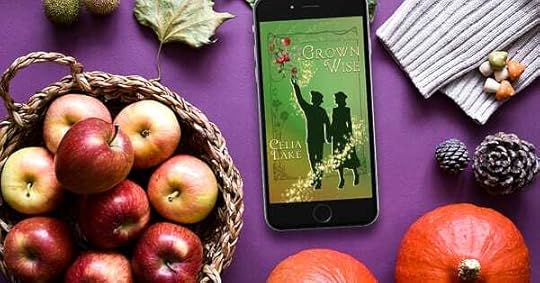 Secret societies, the overview
Secret societies, the overviewAlbion has a number of secret societies – far more than are listed below. These seven, however, are the most notable. Some are quite private about their members, others are more public, or at least some of their members are. All seven are represented at Schola in some form. Some also have a strong presence at various of the other of Albion’s Five Schools.
InvitationsIn general, these societies invite new members in the second year of schooling (the year in which a student has turned 15 before September 1st). Five societies will also consider apprentices who aren’t attending any of the Five Schools at about the same age. All seven will also consider adding someone as an adult, if a potential candidate comes to their attention.
Each society has its own method of initiation and related rituals. They also well as a wide range of customs about how they get together, what they do in such meetings, and how people relate as adults.
They maintain various spaces for group gatherings, and most of them provide a range of services in those spaces, like other social clubs. These include meals, social gathering rooms, at least a few bedrooms for people staying overnight, and other resources. Members usually pay dues to support the building, staff of the building, and a certain amount in the way of routine refreshments (tea, snacks).
Being a memberThe obligations of membership vary from society to society. Generally, they involve some degree of dues or other practical support for the society and also participation in whatever they’re doing. That can ebb and flow with other responsibilities, however.
It is theoretically possible to be a member of more than one society, but in practice it basically never happens. It’s complicated to coordinate in terms of schedule and impact when people are at Schola or at school. As an adult there are concerns about people being pulled in different directions.
It’s more common (as people become adults) for there to be some sort of informal recognition of someone as a friend of the society, perhaps with defined guest privileges in their spaces. Lydia at the beginning of Point By Point is a good example here: she’s welcome to wait for someone to chat to in the general gathering space. But if she wants food, she’d have to pay for it, rather than some of it being covered by her dues.
The secret societiesEach of the societies has a particular focus, and also a range of members, noted below.
We’ll be seeing more of each of these when we get into the next 1920s series. My plan is for each book to focus on one of the societies during the 1920s (or maybe a little earlier), with a romance involving at least one person from that society. I’m looking forward to figuring out how these interconnect!
Animus MundiFocused on ritual magic, Animus Mundi is highly respected. The gatherings usually have an educational focus, a lecture followed by a meal. They maintain a clubhouse in Trellech, as well as a country estate. Both have multiple ritual workrooms with particular design features that can be reserved for specific rituals. The grounds at the country estate also involve various features useful for extended ritual work such as a flat green space, a maze, and a pond with an island. Members tend to be highly intellectual with a good attention to detail.
Animus Mundi usually invites 2-3 people in a given year, exclusively from Schola. They add an adult every three or four years, usually because of some particular event or notable activity. Cyrus Smythe-Clive is a member, and solidly established as one even before he joins the Council. And Edmund Carillon is a member, invited in his second year. (This one has come out in Ritual Time, on the Patreon. It’s also mentioned in Apt To Be Suspicious, Edmund’s romance, coming out in November.)
But not all of the notable ritualists belong to this society. For example, neither Geoffrey Carillon nor Alexander Landry are members. Geoffrey was not particularly notable in his second year. Alexander was invited to Dius Fidius. But if he hadn’t been, his background made people wary. Alexander is on reasonable terms with a number of the members in adulthood, however.
Members tend to be better off (ritual is not a cheap specialty, due to the materials cost and space requirements). The members are roughly balanced in terms of gender.
Dius FidiusThis is the descendent of an older society from before the Pact that focused on support of the feudal rights and maybe responsibilities. Technically, they’re focused on good faith in private affairs. The current name comes from an epithet of Jupiter, calling on him as holder of oaths and laws of hospitality and loyalty. In practice, well, they’re interested in having the sort of good time that involves rich foods, excellent wine, perhaps some imported cigars, and not a lot of fuss.
They usually invite 4-5 people in most years, again always solely from Schola. Most all of the Fortier family direct line have been members (until Ursula turned them down), and their numbers include a fair range of other Lords and Ladies of the land.
They run about 4 men to every 1 woman, but Livia Fortier was also a member in her own right before she married Garin. (The women tend to be particularly well-born and accomplished. Not people you want to annoy.)
Alexander Landry is a member here – something facilitated by the Fortiers, for the benefit of the family. Jehan Knox is a member, and so is Claudio Warren (as is his father, Hesperidon).
Dwellers at the ForgeThe Dwellers at the Forger are trouble-makers. So they say, and other people think so too. The trick is that the Dwellers try to apply their trouble-making in the best tradition of Prometheus bringing fire down to humanity. They want to inspire – and create – something better, and they’re willing to do the hard grinding work to help make that happen. It’s the society best known for forming strong and loyal friendships.
We’ve seen the Dwellers in three books so far. In the Cards and Point By Point both involve Galen and Martin. They’ve been best friends since they were invited into the Dwellers in their second year. The Magic of Four also spends time with the Dwellers.
As a society, they tend to particularly nurture cross-generational and cross-speciality discussion. Their building in Trellech has a large social room designed for easy conversation with a number of people, along with meals easy to nibble on while chatting. (It also has shared workrooms, personal laboratories and workrooms for some individuals, sleeping rooms, and a substantial costume store for when people need specific clothing or items for particular projects. A lot of their lore and ritual comes back to the forge. It’s all about making something out of raw ingredients that can be used for the work to come.
The Dwellers invite 2-4 people most years, but are one of the two societies most likely to add people as adults. That’s especially true if someone’s been around them for a while and interested in their projects. They draw from all walks of Albion’s society, but particularly crafters, magical specialists, and people interested in sharing information (including several journalists). They’re about evenly divided between men and women.
The Four MetalsFocuse on magical crafting – and to some degree magical innovation – in all its forms, the folks of the Four Metals can often be found having a heated discussion in their house in Trellech or their larger property in the country. That latter space has a wide range of workshops and spaces for all kinds of different crafting activities.
The Four Metals folks feature particularly in the Mysterious Fields trilogy (Vitus, our hero, is a member). They have a particular tradition for funerals of the friends in the society cold-forging a linked chain stamped with their names that is buried on top of the coffin. That might give a sense of the close relationships that can form, and the way they last for extended periods.
The Four Metals are one of the societies most likely to invite people later in adulthood. Sometimes it takes a while for someone’s talents to be visible. They’re about evenly divided between men and women.
Many Are The WatersThe name everyone calls them by is actually one of their ritual sayings – none of them are sharing about their name! (I’ve been asked if I know what it is, and no, I don’t yet. I’ll figure it out by the time I write their book in the next series.)
As you might guess from that phrase, they have a particular interest in water-focused magic, including anything related to healing or the rivers. They invite a non-trivial number of people from Seal House at Schola, but there’s also a sister group at Alethorpe. Their interests do extend to the coasts, at least at times, with a few members from both Dunwich and Forvie.
Besides coming up in The Magic of Four, we’ve seen two people identify themselves as members so far: Rhoe Belisama (who talks about it in Sailor’s Jewel) and Mabyn Teague (who touches on it in The Hare and the Oak.) They have a moderate majority of women.
The Nine MusesHere are our actors and musicians and performers. As you might guess by their focus, the Nine Muses tend to be rather public about membership. They’ll often collaborate on performances, both at Schola and in Trellech and London. They tend to run about 2/3 women, with 7 or 8 new members added most years, mostly from Schola.
Victor, in Perfect Accord, is a member. Charlotte’s take on the society in that book goes like this:
Not that the Nine Muses were actually all that secret, seeing as how it was tricky to throw lavish performances and hide who was part of them at the same time. She went to perhaps a third of the parties now. They tended to be a lot of avant-garde art, some of which Charlotte liked and some of which she had very little patience for. Writing an entire cycle of poems without using the word ‘the’ was an interesting personal challenge, but it should perhaps not be let out in public without warning.
We’ve also seen some of their members briefly in the beginning of Mistress of Birds: both Thalia and her friend Hilaria go to a number of their parties in London. Thesan helps supervise a revue largely organised by members of the Nine Muses in Eclipse.
Society of the White HorseLast but by no means least, we have the Society of the White Horse, probably the most mystical of the seven societies. (Many Are The Waters would probably concede this point, but those two societies tend to collaborate regularly and well together.) They focus on an agricultural take on the land magic, horses, with certain amount of liminal psychopomp work that never quite strays into the realm of what the Council deals with.
They take most of their members from Snap, as the agricultural school, with occasional members from others. Unlike all the other societies, they have a very deliberate method of seeking out new members. It’s described in Grown Wise (chapter 5).
They do batches of divination on everyone in the relevant age year (second years at the Five Schools), including everyone apprenticing or not at one of the schools through the autumn. For any batch that comes up with something unusual, they do more individual divination. If needed, that includes people going out and having a ritual dreaming session on a personally relevant bit of landscape. Out of that, they’ll make 5 or 6 invitations, sometimes a few more.
They have their own series of seasonal rites and celebrations. Grown Wise shares the ones at Lammas and autumn equinox, and mentions a few others.
More to comeObviously, there’s a lot more on my mind about all of these groups. I’m looking forward to exploring them in future books. Drop me a note if there’s something you’re especially hoping to find out more about!
The post Secret Societies appeared first on Celia Lake.



